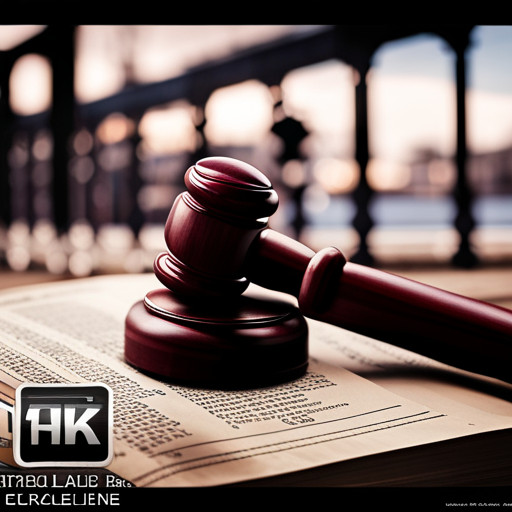Camp Lejeune Water Contamination Lawsuits Health Effects and Resources
Like an insidious poison, water contamination at Camp Lejeune has left a lasting legacy. This article provides an in-depth exploration of the contamination's origin, the hazardous chemicals involved, and the ongoing litigation against major corporations.

The health consequences for residents, including a potential link to Parkinson's disease, are examined. Legal resources available to assist affected individuals are also discussed, underscoring the far-reaching implications of this environmental crisis.
Key Takeaways
- Camp Lejeune water contamination was caused by volatile organic compounds and improper waste disposal sites.
- Lawsuits have been filed against DuPont, Chemours, and 3M corporations for knowingly selling dangerous firefighting foam that injured firefighters and polluted the water supply.
- Camp Lejeune residents may be entitled to compensation through the Camp Lejeune Justice Act, with claim amounts reaching several millions.
- Recent developments include survivors recounting their experiences, increased cancer risk for children born at Camp Lejeune, bellwether trials determining payout levels, and the connection between Parkinson's disease and water contamination.
The Origin of Camp Lejeune Water Contamination

The contamination of water at Camp Lejeune originated from the infiltration of volatile organic compounds such as trichloroethylene (TCE), tetrachloroethylene (PCE), vinyl chloride (VC), and benzene. These substances were primarily introduced into the groundwater from improperly lined hazardous waste disposal sites and the utilization of industrial solvents in cleaning weaponry and machinery.
These groundwater contamination sources were largely unchecked, leading to widespread environmental damage. The environmental impact of Camp Lejeune water contamination has been profound, affecting the ecosystem and the health of those residing in the area. Prolonged exposure to these contaminants has been linked to a variety of health issues, further exacerbating the detrimental effects of this environmental crisis.
A comprehensive cleanup effort is required to mitigate the ongoing damage and to prevent future contamination.
The Role of Hazardous Chemicals in the Contamination

Volatile organic compounds such as trichloroethylene (TCE), tetrachloroethylene (PCE), vinyl chloride (VC), and benzene were leading contributors to the groundwater pollution at the military base. These hazardous chemicals seeped into the groundwater, causing widespread environmental contamination. The role of these chemicals in the contamination process was pivotal, leading to severe health effects among the base's inhabitants.
- Role of Hazardous Chemicals:
- TCE: Used as a solvent for cleaning metal parts.
- PCE: Utilized in dry cleaning processes.
- VC: Produced when TCE and PCE breakdown, highly toxic.
- Benzene: Used in manufacturing of plastics, resins, synthetic fibers, rubber, dyes, detergents, drugs, and pesticides.
This contamination, coupled with inadequate environmental safeguards, resulted in one of the largest water pollution incidents in U.S. history.
Litigation Against Major Corporations

Major lawsuits have been initiated against corporations such as DuPont, Chemours, and 3M, accusing them of knowingly selling dangerous firefighting foam that not only injured firefighters but also polluted the base's water supply. These corporations allegedly breached environmental regulations, resulting in severe consequences for both the environment and human health.
| Corporation | Alleged Violation | Potential Consequences |
|---|---|---|
| DuPont | Selling dangerous firefighting foam | Water contamination, health impact |
| Chemours | Breaching environmental regulations | Legal penalties, cleanup costs |
| 3M | Negligence in product safety | Compensation eligibility for victims |
The repercussions of these violations are vast, impacting the environment, health, and raising significant legal and financial implications. A comprehensive understanding of environmental science is crucial in evaluating the extent of damage caused by such practices.
The Impact of Contaminated Water on Firefighters

Exposure to dangerous firefighting foam, specifically containing per- and polyfluoroalkyl substances (PFAS), has been linked to significant health risks among firefighters, including various forms of cancer and other serious illnesses.
- Impact on Firefighting Techniques:
- Use of PFAS-containing foam was prevalent, due to its effectiveness in extinguishing petroleum and chemical fires.
- Now, alternatives are sought to mitigate health risks, altering traditional firefighting methods.
- Long Term Health Effects:
- Prolonged exposure to PFAS can lead to numerous health problems, including thyroid disorders and kidney cancer.
- Firefighters exposed to such substances often suffer from long-term, debilitating illnesses.
This contamination issue underscores the need for stringent environmental safety measures and the development of safer firefighting alternatives.
Health Consequences for Camp Lejeune Residents

Residents of the military base endured various medical conditions, ranging from multiple types of cancers to debilitating neurological disorders, all presumed to be linked to prolonged exposure to the polluted water. The contamination, resultant of improper disposal of hazardous waste and use of industrial solvents, led to the seepage of volatile organic compounds into the groundwater.
Long term health effects were apparent even in young people, presenting an increased risk of cancer development. Compensation options were established through the Camp Lejeune Justice Act, enabling affected residents to claim for a tax-free lump sum. The dollar amounts for claims can reach several million, an essential relief considering the potentially enduring financial challenges faced by those affected.
The Camp Lejeune Justice Act and Compensation Claims

The Justice Act instituted in response to the water crisis offers a path to monetary relief for individuals suffering from illnesses linked to the tainted water supply. The compensation process is designed to address the long-term effects of the water contamination at Camp Lejeune.
The Act stipulates:
* Potential claimants should have lived or worked at the base for at least 30 days between 1957 and 1987.
* Illnesses eligible for compensation include 15 specific diseases believed to be linked to the contaminated water.
The compensation package includes:
* A tax-free lump sum payment, with amounts varying depending on the severity of the illness.
* Additional benefits for dependents of veterans who died from the diseases.
This Act signifies the recognition of the environmental disaster and its profound impacts on human health.
Updates on Camp Lejeune Water Contamination Lawsuits

Moreover, the lawsuits have brought to light the negligence of corporations and their role in the contamination of the water supply. As a result, these legal proceedings are a critical step towards holding responsible parties accountable, thereby setting a precedent for future environmental litigation.
The Link Between Parkinson’s Disease and Contaminated Water

Emerging research suggests a possible link between Parkinson's disease and exposure to contaminated water, underscoring the need for further investigation into this association. This connection has particular relevance to instances of water contamination, such as those experienced at Camp Lejeune.
- Parkinson's disease symptoms may be exacerbated by exposure to contaminants, such as:
- Prolonged exposure to trichloroethylene (TCE), tetrachloroethylene (PCE), vinyl chloride (VC), and benzene
- Ingestion or inhalation of these compounds could potentially lead to neurological alterations
Moreover, individuals affected by this disease may face long term financial challenges due to medical expenses and loss of income. The potential burden of these costs underscores the need for adequate compensation for affected individuals, as well as rigorous measures to prevent future contamination incidents.
Legal Support for Affected Camp Lejeune Residents

Legal representation for those impacted by hazardous environmental conditions plays a crucial role in securing just compensation and enforcing accountability. In the context of Camp Lejeune water contamination, several law firms offer expertise in managing the lawsuit process, providing essential resources for affected residents seeking redress.
These firms, with extensive experience in environmental litigation, guide claimants through the complex legal landscape associated with the Camp Lejeune Justice Act. This Act provides significant compensation for those suffering due to the negligent disposal of volatile organic compounds.
The availability of these resources, including legal support and information on compensation, is instrumental in ensuring that those impacted by the contamination at Camp Lejeune have the means to pursue justice.
Privacy Policies for Legal Aid Websites

Privacy policies on websites providing legal aid are essential in maintaining the confidentiality and trust of the individuals seeking assistance. Such policies should clearly outline how personal information is collected, used, stored, and protected. Especially in cases like Camp Lejeune water contamination, where privacy concerns are heightened and legal aid availability is crucial.
- Data Collection and Usage
- Type of personal data collected (name, contact details, etc.)
- Purpose of data collection (case evaluation, updates, etc.)
- Data Protection Measures
- Use of encryption and secure servers to protect data
- Regular audits for potential security vulnerabilities
The presence of a comprehensive privacy policy ensures the responsible handling of sensitive information, thereby fostering trust between the legal service provider and the individual seeking assistance. This can play a significant role in facilitating access to legal aid.
Frequently Asked Questions
What Steps Were Taken to Mitigate Camp Lejeune Water Contamination Once It Was Discovered?
Upon discovery of the contamination at Camp Lejeune, mitigation techniques involved extensive water treatment, removal of contaminated soil, and implementation of stringent monitoring protocols to prevent further environmental degradation.
How Long Did It Take for the Authorities to Recognize and Address the Issue of Water Contamination at Camp Lejeune?
How long did contamination persist before intervention at Camp Lejeune? The contamination timeline reveals that it took decades, from the 1950s until its discovery in 1982, for the issue to be recognized and addressed, amidst significant legal challenges.
What Measures Are Being Taken to Prevent Such Water Contamination in the Future?
To prevent future water contamination, measures include regulation improvement, stringent monitoring of hazardous waste disposal, and infrastructure modernization with advanced filtration systems to ensure safe, clean water for all residents.
How Are the Families of Affected Camp Lejeune Residents Being Supported?
Support for affected Camp Lejeune families includes compensation through the Camp Lejeune Justice Act, which provides tax-free lump sums. Additionally, support networks exist to aid with long-term financial challenges and health concerns.
What Ongoing Medical Care or Monitoring Are Those Affected by the Camp Lejeune Water Contamination Entitled To?
Those affected by Camp Lejeune water contamination may receive ongoing medical care or monitoring as part of their contamination compensation package. Survivor stories highlight the importance of these services in managing long-term health effects.

This post has been generated by AI and was not reviewed by editors. This is Not legal advice. Please consult with an attorney.




